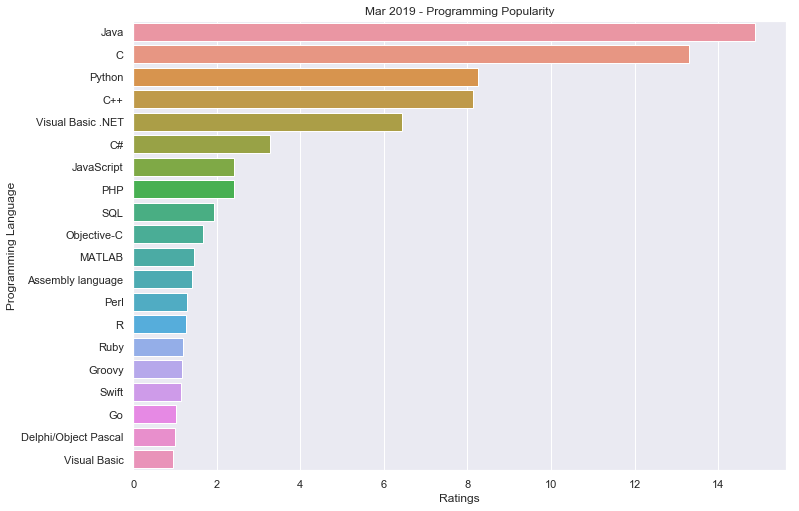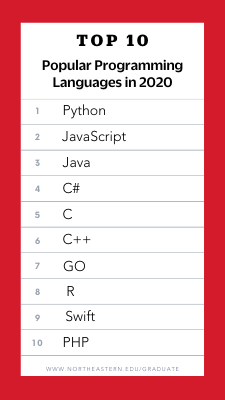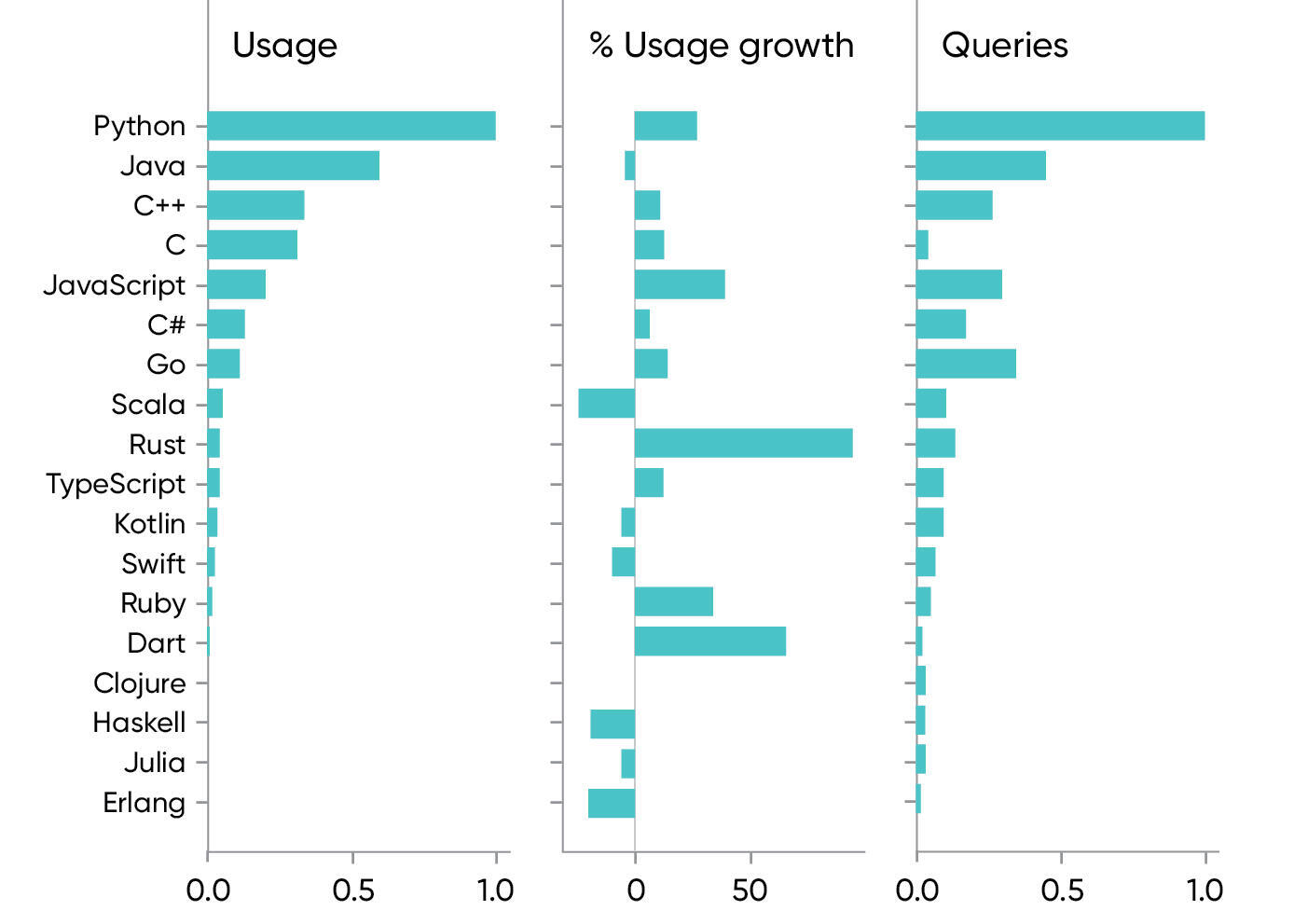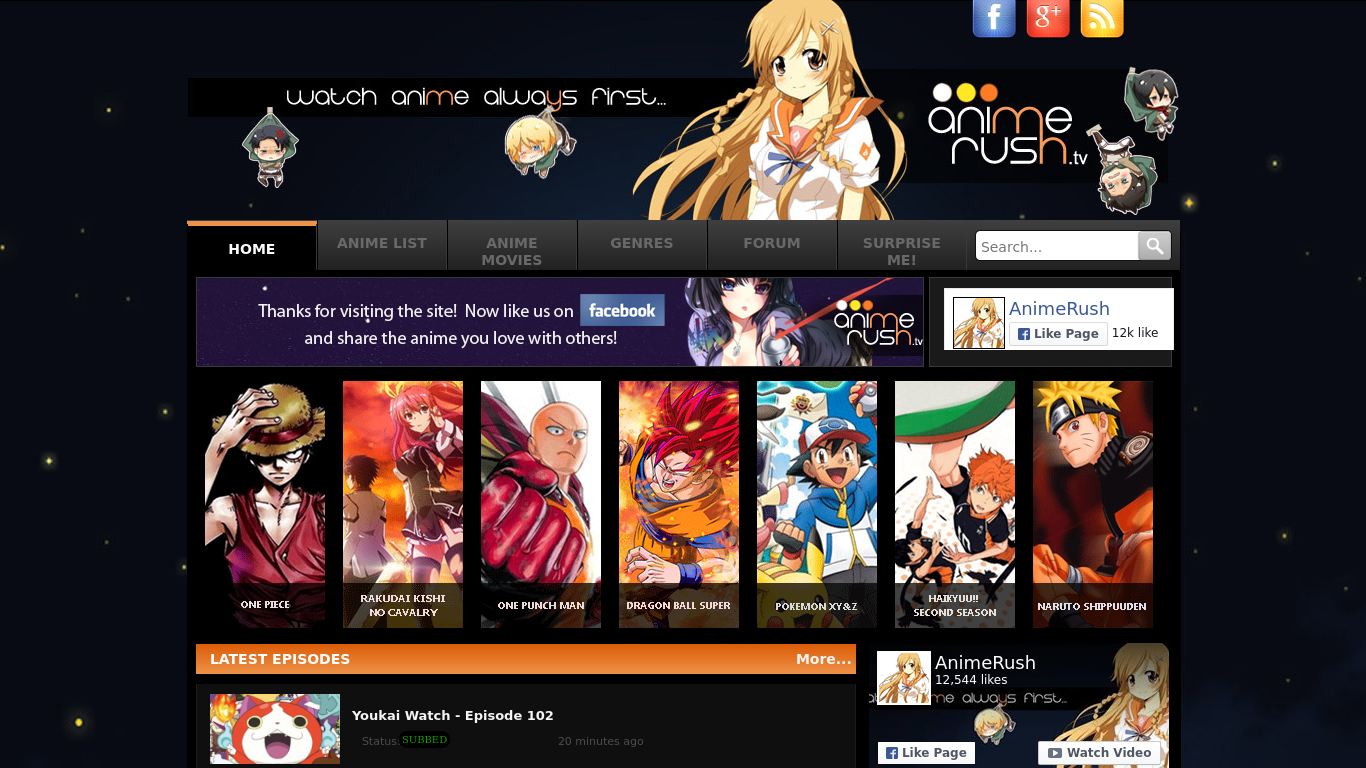JavaScript (also known as NodeJS) is a popular language among developers who need to work on server-side and client-side programming. It is compatible with several other programming languages, allowing you to create animations, set up buttons, and manage multimedia.
Nowadays, there are about 700 programming languages and even a bigger amount of frameworks. Some of them slowly degrade, some are a step away from extinction, and some are still growing. We’ve done all the hard work for you analyzing current trends on the market, and narrowed down the list so that you can easily pick the most scalable technology that suits your needs best. Keep reading this post to find out top programming languages and frameworks for software application development for the next 5 years. The choice in favor of any technology from our list will guarantee you a top-notch application that won’t face maintenance, scalability or service issues.
Before considering which technology to choose for your software, please take into consideration the following criteria:
- For the second year in a row Rust, Swift and Go make the top 5 most loved programming languages. VB tops the list of the most dreaded technologies – developers wouldn’t miss it if it went extinct. Developers who don’t currently develop with Android, Node and Angular want to do so.
- C is the oldest programming language, one of that is still popular today. Dennis Ritchie was the basis of the language in the early seventies. C is suitable for many applications but requires a high degree of accuracy. Many popular programming languages such as Java, PHP, and JavaScript are based on C.
- VBA, Objective C, and Perl hold the top spots for the most dreaded languages—languages that had a high percentage of developers who are currently using them, but have no interest in continuing to do so.
- C is a programming language that was developed by Bjarne Stroustrup in 1983. Pros: It is a popular language, and thus, there are many compilers and libraries; Other programming languages like C, C#, and Java have very similar syntax to C, make it easy to learn for everyone who knows C.
- A large set of tooling support. Code quality is a key issue in software development. It’s important to remember that the quality of the code depends on the development tools required for the effective coding and productivity of the software team.
- Big developers community. Make sure that the chosen programming language or framework has a strong community. It will provide the necessary support to your product at any development stage.
- Scalability. Of course, you want to see your application grow in size and complexity, and scalability will allow you to add new components without damaging its performance.
- Third-party integrations. Assure that the technology you picked supports third-party API integration, so you can enhance your application with new features and functionality if necessary.
The Top Programming Languages for Web Application Development
Our Choice for Web App Development Language #1: Ruby
Since its release in 1995, Ruby gained a lot of devoted coders. It is a dynamic, open-source programming language focused on simplifying programming work. Interesting fact: Yukihiro Matsumoto, Ruby’s chief designer, in his interview once said: “The goal of Ruby is to make programmers happy”. Ruby was created to increase developers’ productivity and was ranked as the 9th most popular programming language by Stack Overflow in 2019.
Source: StackOverflow Developer Survey, 2019
Ruby is also included in 2019 top 10 languages by GitHub repositories contributions.
Source: Octoverse report
Key Ruby features:
- Ruby combines a variety of beneficial features: object-oriented, functional, dynamic, concise, and garbage-collected.
- The language has a vibrant and growing community and is used by big companies such as Twitter, Github, and Airbnb.
- Ruby is a completely free and extremely flexible programming language as it allows developers to easily alter its parts.
One of the main reasons behind Ruby’s popularity is its server-side open-source web application framework Ruby on Rails. It has an excellent ecosystem full of tools and support necessary for developers.
Leobit’s software engineers used Ruby for multiple highly successful projects, including a shopping e-commerce platform that now has more than 1 million active users and 5+ million app downloads with 5.00 stars ranking in AppStore and Play Market.
E-commerce marketing solution created by Leobit
Our Choice for Web App Development Language #2: PHP
It seems that PHP is losing popularity, but it is not true according to PHP usage statistics. W3Techs, an extensive and reliable web technology survey, reports that PHP is used by 78,9% of all websites with a known server-side programming language. PHP stands for Hypertext Preprocessor and was developed in 1995. Originally it was created as a set of Common Gateway Interface binaries with the main purpose of developing dynamic web apps. However, it kept on evolving and eventually became a fully-fledged programming language.
Key PHP features:

- PHP is used for server-side web development. It is a highly effective programming language when it comes to creating web applications promptly.
- PHP assures dynamic software development and has debugging functionality, that’s why the majority of content management systems and websites are written in PHP. Facebook can be considered the most prominent example of a website developed with PHP.
- Owing to PHP being used by giant companies such as Facebook and WordPress led to the existence of great tooling support for this programming language.
When speaking about the popularity of PHP, it’s worth mentioning that PHP made it the top 10 on the list of most popular programming languages in 2019 according to the results of the Stack Overflow’s annual survey conducted among 90,000 developers worldwide.
Source: StackOverflow Developer Survey, 2019
Also, Octoverse annual report provided by GitHub listed PHP at the 4th position by repository contributions.
Source: Octoverse report
Leobit’s team has vast expertise in using PHP for web application development. One example of Leobit’s PHP projects is a real estate portal for the US market. The developed platform provides users with great workload mobility, increased performance, and 3rd party integrations that shows additional data about the property.
Real estate portal for the US market
Our Choice for Web App Development Language #3: Python
Python is the fastest-growing first-class programming language for backend development. Its rise in recent years can be explained with the emergence of Artificial Intelligence, Machine Learning, Big Data, and Robotics, as Python is the most preferred language for developing applications based on these trending technologies.
Key Python features:
- Python is a highly efficient cross-platform language with portable code. So if you want to run Python code on different platforms such as Linux, Windows, Unix, and Mac, there is no need to change it.
- Python is a dynamic, high level, free open source and interpreted programming language. It supports object-oriented programming as well as procedural oriented programming.
- It is a developer-friendly language that can be easily mastered in just a few days. It also has a large standard library and a very active community.
The popularity of Python is not going to slow down. According to Github’s PYPL rating, Python is the most in-demand programming language for 2020.
Source: PYPL
Stack Overflow’s Annual Developer Survey conducted among 90,000 developers worldwide listed Python as the 2nd most loved and 4th most popular language in 2019.
Source: StackOverflow Developer Survey, 2019
A lot of today’s most famous websites were built using this language, including Instagram, YouTube, Google, Spotify, Netflix, Uber, Dropbox, Pinterest, and Reddit. What other proof of Python’s popularity is needed? Leobit’s engineers also have a profound experience in creating web applications using this language. Our Python developers created a solution, called NewsDetect, that collects and analyzes thousands of articles every day from different platforms and defines news tonality: positive, negative or neutral. It also allows to monitor trends in the media world and track statistics about daily changes in news tonality. This web application was built with Python on top of the Django web framework and is unique on the Ukrainian market.
The Top Programming Languages for Mobile Application Development
Our Choice for iOS Mobile App Development: Swift
Swift is a multi-paradigm, general-purpose, compiled programming language developed mainly as an alternative to Objective-C in the development of native iOS and Mac OS apps. It is a relatively young language released in 2014 by Apple Inc. However, Swift already can be considered the primary programming language for iOS application development that is going to displace its predecessor, Objective-C, in the near future.
Key Swift features:
- Swift was built to be fast. Using LLVM as its compiler framework, Swift code is transformed into optimized native code that gets the most out of modern hardware.
- Swift has a concise, simple, and clean syntax that is similar to the English language. That’s why it is easier to write and maintain.
- Swift is a programming language with a serious safeguard that increases readability and reduces errors in code.
Talking about the popularity of Swift, it’s worth mentioning that Swift got listed on the 6th position in a category of the most loved programming languages according to the 2019 Stack Overflow’s annual survey.
Source: StackOverflow Developer Survey, 2019
Also, Swift made it Top 10 on the list of popular ranking website PYPL. Taking into consideration how young Swift is, this is definitely an achievement.

Source: PYPL
As Leobit specializes in web and mobile application development services, we built many iOS apps. An innovative real-time marketing solution is an example of the application our team built with Swift.
IOS app for finding local flash deals developed by Leobit
Our Choice for Android Mobile App Development: Kotlin
Kotlin was developed by JetBrains as a language that would displace Java in Android application development. Kotlin completed its mission and was announced by Google as a priority language for Android development in 2019. Kotlin is much simpler than Java, and, at the same time, it is more productive thanks to its clean and concise code. Kotlin also outperforms Java in Android application development as it was built specifically for Android, whereas Java is a general-purpose language.
Key Kotlin features:
- Kotlin runs on Java Virtual Machine and is fully interoperable with Java, so you can use the existing huge ecosystem of Java libraries.
- It compiles into JavaScript that makes Kotlin suitable for front-end and back-end development.
- Kotlin is maintained by JetBrains and Open Source community, that’s why it is provided with excellent tooling support.
Kotlin is the most promising programming language for mobile development, which can be explained with the constantly increasing number of Android users worldwide. Only in the United States, this figure reached 124.4 million users in 2019 according to Statista report. Stack Overflow survey featured Kotlin as the 4th most loved programming language among developers.
Source: StackOverflow Developer Survey, 2019
Also, the Octoverse annual report provided by GitHub recognized Kotlin as the 4th fastest-growing programming language existing today.

Source: Octoverse report
Leobit’s experts have a great experience with using Kotlin for Android application development. For example, the Android fitness application developed by Leobit’s team engages users in walking and is a part of the Norwegian public healthcare initiative.
Web, iOS and Android interactive walking app created by Leobit
The Top Frameworks for Web Application Development
Our Choice for Web App Development Framework #1: .NET Core
.NET Core is a high performing cross-platform framework released and maintained by Microsoft. It is written in C# programming language and helps to build robust web applications. .NET Core is a modern replacement of .NET Framework with some new additional and enhanced features. It is a good choice for those who want to develop modern applications that can be deployed in a cloud environment.
Key .NET Core features:
- Thanks to its modularity, .NET Core is an extremely lightweight and one of the fastest web application frameworks available on the market.
- .NET applications are supported by Microsoft that makes them safe, reliable, and fully compatible with all Microsoft products.
- As .NET Core is a cross-platform framework, it can be executed on any operating system. It is also open-source, which means that every developer can contribute to the investigation and improvement of your project.
.NET Core should be on your top consideration list as it is the third most commonly used framework 2019 in the list provided by Stack Overflow. What is more, 77.2% of developers voted for .NET Core placing it in the first position in a category of the most-loved non-web frameworks.
Source: StackOverflow Developer Survey, 2019
A great example of an application powered with .NET Core framework is indoor and outdoor cycling solution developed by Leobit. The application helped our customer’s company to enter the global market and grow end product users by 10 times.
Web-based data analysis tool developed by Leobit
Our Choice for Web App Development Framework #2: Angular
Angular is one of the most promising front-end web application platforms. It was developed by Google to build scalable and high performing web applications. The first version of Angular was released in 2010. The framework is written in JavaScript and designed with a particular purpose to simplify the process of creating user interfaces and overcome the restrictions of other existing technologies in one integrated package.
Key Angular features:
- Angular is based on a paradigm of declarative programming that allows writing the logic of a computation without describing its control flow thus making the web development less complicated.
- Angular is platform-independent that means it can be implemented in different environments: browser, server, web, and mobile devices.
- Angular’s feature of two-way data binding provides automatic data updating as soon as changes are made.
The ecosystem of Angular is thriving. It has an incredible amount of libraries and one of the biggest community of supporters on Github. Angular made the Top 3 on the list of 2019 most popular web frameworks by Stack Overflow. So it definitely should be on your web development framework’s list.
Source: StackOverflow Developer Survey, 2019
Using the Angular framework for front-end application development, Leobit’s experts created a customizable web CRM. This unique development solution allowed the customer to save $350,000 within the first 6 months after the implementation.
A web CRM for enterprises developed by Leobit
You can also check one of Leobit’s previous posts on why Angular + .NET Core combination is an optimal technology stack for your next web app development project.
If you already made up your mind or still need advice about choosing a language or framework, feel free to share with us your project details and our experts will promptly help you to pick the best-fitting tech stack.
Data scientists are in high demand. The U.S. Bureau of Labor Statistics states that the overall job growth for computer and information research scientists is projected to be 19% from 2016 to 2026. Students pursuing careers in data science need to know how to use the most popular and appropriate programming language for each type of project.
To learn more, check out the infographic below created by Maryville University’s Bachelor’s in Data Science program.
The Classics
A few programming languages have been around long enough to be widely considered the cornerstones of modern computer programming. These languages include Java, Python, C, SQL, and R.
Which Programming Language To Learn
Java
Java’s popularity stems from its portability, user-friendliness, reusability, and the fact that its platform is independent at the source and binary levels. The language is a widely used choice to build Android apps, which are used for server-side applications for video games.
Python
Python’s widely considered the easiest programming language to learn and it uses a simple syntax. This makes it a common language taught in school, not to mention the language used to build Pinterest and Instagram. Additionally, its Python Package Index has thousands of third-party modules for Python. That makes it useful for building web applications for data analysis and handy in software development used for building e-commerce systems.
C
Considered to be programming’s “common language,” C is popular because it can be used to create other programming languages such as Perl, Ruby, and R. It’s also used to speed up other languages, and is used by most operating systems like Android, iOS, Windows, Linux, and Mac. Because of this, it’s used for applications across every domain of programming.
Most Popular Programming Languages On Stack Overflow
SQL
SQL is popular because it forms the basis of many database management systems. Some of these systems include MySQL, Oracle, and PostgreSQL. It’s used for relational database management and data manipulation.
R
R is used as an open-source route to use the S language and includes a facility for effective data handling and storage. It also offers an integrated collection of intermediate tools for data analysis, and it features a fully planned and coherent system. It boasts a lot of uses, such as statistical computing, time-series analysis, graphics, and more.
The Newcomers
Developers of the newest programming languages have drawn from the strengths of established programming languages to overcome weaknesses and offer many useful benefits and features to the programming community.

Rust
Rust has gained attention because it performs better than PHP, Python, or JavaScript when writing low-level code. It also offers methods of programming that don’t cost substantial runtime overhead. Additionally, it supports modular programming and includes a package manager. Rust is typically used for web development.
Julia
Built for high performance, Julia offers great support for interactive use and is accessible to programmers of all backgrounds and experience levels. Finally, it’s an open source language and publicly viewable at GitHub. It’s used for deep learning, scientific computing, machine learning, data science, parallel and heterogeneous computing, and data visualization and plotting.
Elixir
Elixir offers greater productivity than other non-java languages, and it’s used for a wide range of application development, such as the building of Android apps. It also offers many tools that automate tasks and increase efficiency.
Elm
Elm tends to be popular among those who prefer functional programming. It shows helpful error messages, which makes it easier to maintain than other languages. It also doesn’t have runtime exceptions, and it automatically enforces semantic versioning. It’s used for building user interfaces on the web.
Top Careers in Data Science
Students pursuing a career in data science can choose from numerous lucrative and rewarding occupations. These include: computer and information research scientists; computer systems analyst; operations research analyst; and database administrator.
Computer and Information Research Scientist
Those in computer and information research scientist roles are charged with inventing computing languages, methods, and tools, developing and advancing software systems, and assisting engineers and scientists in solving computing issues. The role’s projected job growth between 2016 and 2026 is 19%, and its 2018 median pay is $118,370.
Computer Systems Analyst
A computer systems analyst is tasked with conducting cost-benefit analyses of various IT systems, recommending ways to improve existing computer system functionality, and overseeing the installation and configuration of IT systems. The position’s projected 2016-2026 job growth is 9%, and its 2018 median pay is $88,470.
Operations Research Analyst

Individuals in operations research analyst positions collect and organize data from various sources, analyze info to identify problems and potential solutions, and use various methodologies to analyze data and develop solutions. The role’s projected job growth between 2016 and 2026 is 27%, and its 2018 median pay is $83,390.
Database Administrator
Database administrators oversee an organization’s data security, maintain database efficiency and proper functionality, and create and administer databases per user needs. The position’s projected 2016-2026 job growth is 11%, and its 2018 median pay is $90,070.
Conclusion
As worldwide dependence on technology grows, data science professionals will play a crucial role in building programs and applications to serve the needs of diverse individuals, communities, and organizations around the world. For this reason, data science will be the unifying language of the future.
